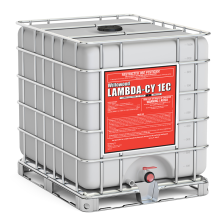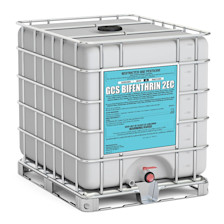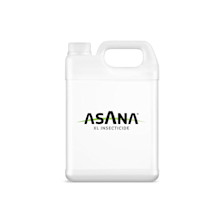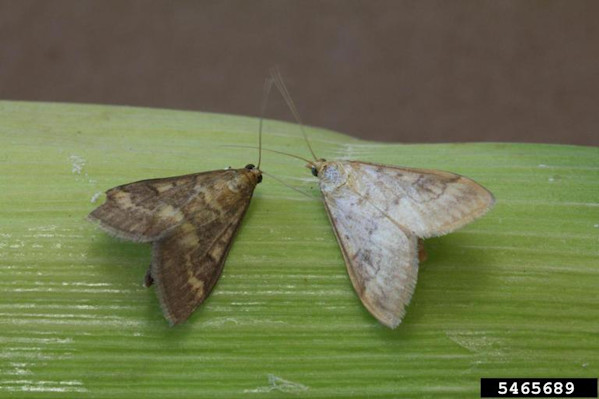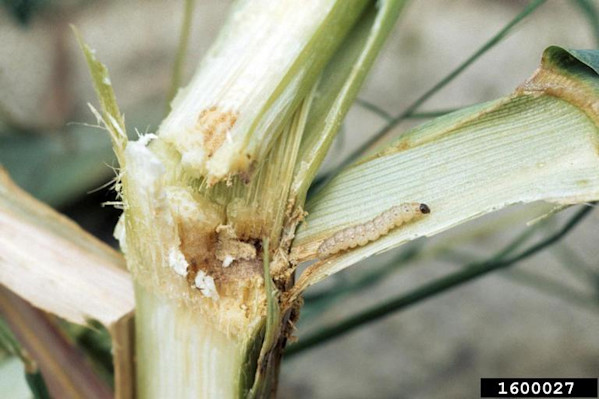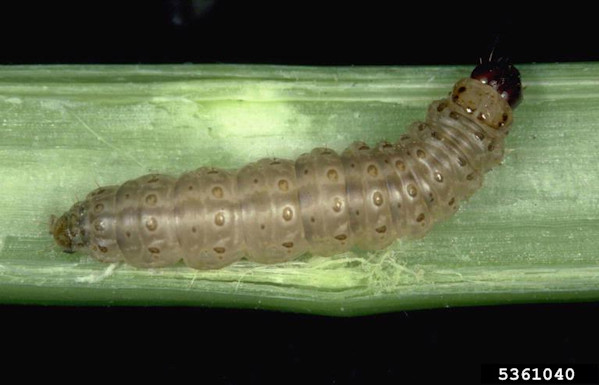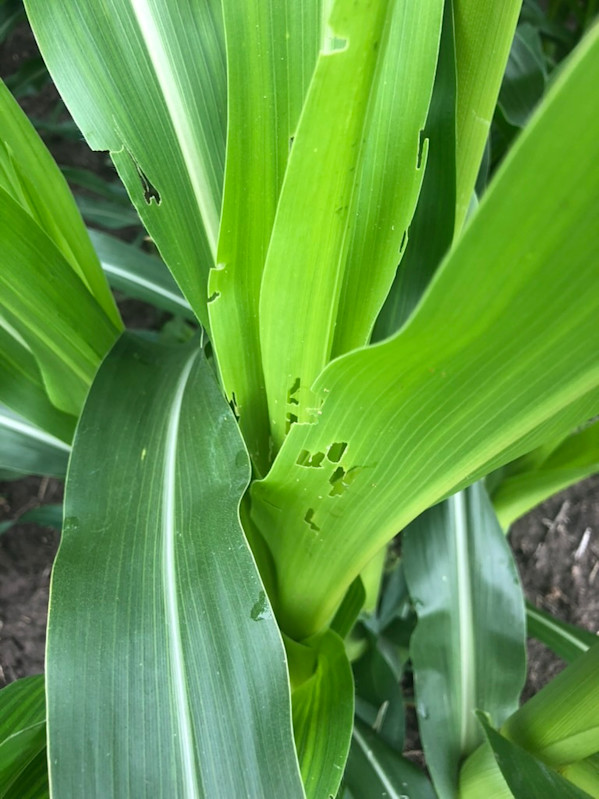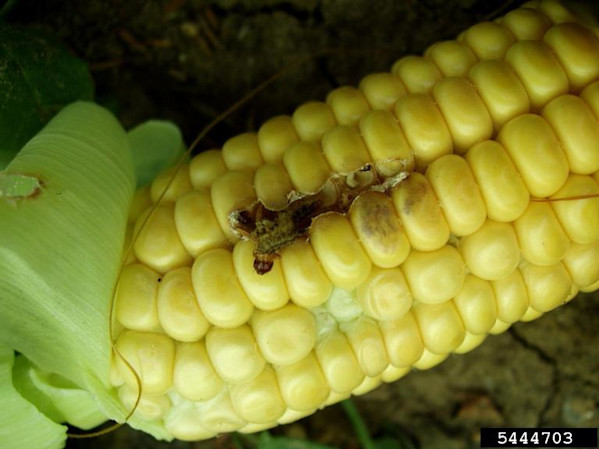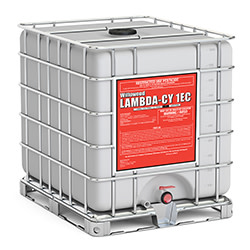What Are European Corn Borers?
The European corn borer is a species of moth with a four-stage life cycle:
Egg
Larva*
Pupa
Adult moth
*Because European corn borers primarily damage corn crops at the larval stage, this is when control measures are applied.
Depending on the region of corn production, there can be between one and four generations of ECB per year, although two generations per year is most common.
First Generation
First generation European corn borer larvae overwinter inside corn stalks and corn cobs, which provide protection for the larva from weather and predators. In early spring, the larvae become active and convert into the pupa stage.
Adult moths then emerge in mid-May through mid-June. They mate, and the female moth lays eggs in clusters of 5-30 eggs on the underside of corn leaves near the midrib. Eggs hatch in 4-10 days, and the larva feed in the whorls of the plant, which causes a shot-holed appearance on the leaves as they continue to grow.
As the larvae increase in size, they bore into the tender stalk, forming a cavity within the stalk. The larva then pupate and the second generation moth emerges 7-14 days later.
Second Generation
Second generation European corn borer moths mate, and the female moth lay eggs on the underside of leaves. These lava hatch and feed on remaining pollen in leaf axils and also on corn silks. Eventually, the second generation larvae feed and enter the shanks of ears, ear tips and upper half of corn stalks.
(Image Credit: Adam Sisson, Iowa State University, Bugwood.org)

